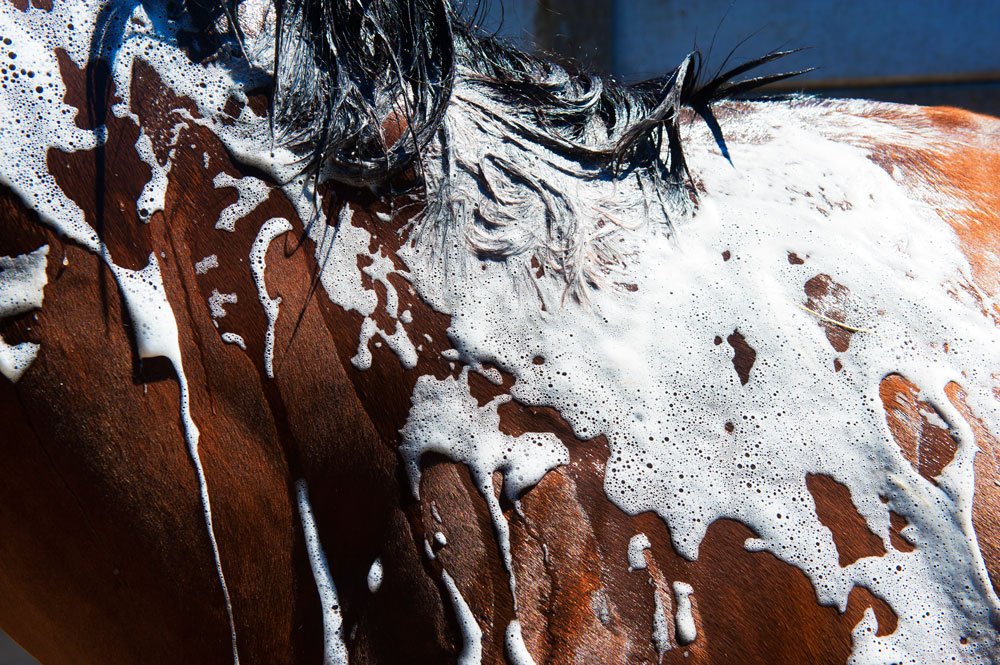This time of year may find yourself spending more on your horse’s hair-care products than your own, but are you buying wisely? Test your knowledge of equine beauty treatments by deciding which of the following shampoo-related statements are true and which are false:

1. The amount of suds a shampoo produces is related to its cleaning power.
2. Special purple shampoos highlight white areas by tinting the horse’s coat.
3. Frequent shampooing can lead to damage of a horse’s coat.
4. Human shampoos are unsafe to use on horses.
Answers below …. scroll down
The answers:
1. False. Suds and foam, enhanced by boosting agents in commercial formulations, serve no purpose other than to appeal to the person giving the bath.
2. True. Whitening shampoos work by translating the invisible ultraviolet component of sunlight into an imperceptible blue tint. If a horse washed with such a shampoo stands under a fluorescent lamp, his coat has a bluish-greenish tint, but under natural light, the blue tint is neutralized to make the whites look whiter.
3. True. Repeated shampooing can strip a horse’s coat of natural oils that help protect the individual hair shafts, leading to brittleness and premature breakage. To minimize the oil-stripping effects of bathing, you can use a coat conditioner after washing.
4. False. In general, equine skin is more sensitive than human skin, but gentle, low-sudsing formulas, such as baby shampoo, can be safely used on most horses. Avoid washing horses with detergents meant for dishes, cars, laundry or other inanimate objects.
Don’t miss out! With the free weekly EQUUS newsletter, you’ll get the latest horse health information delivered right to your in basket! If you’re not already receiving the EQUUS newsletter, click here to sign up. It’s *free*!









